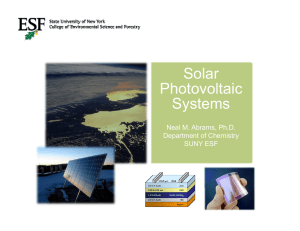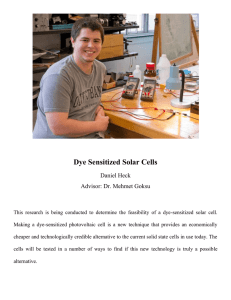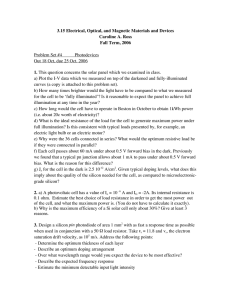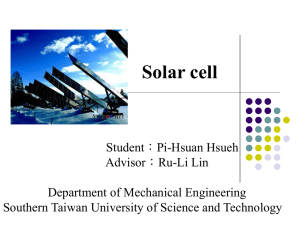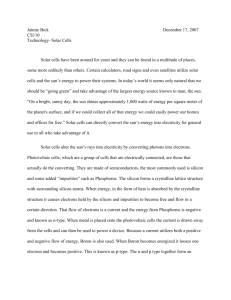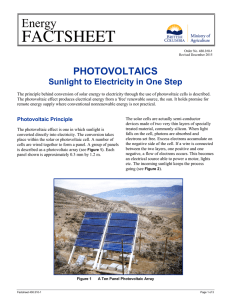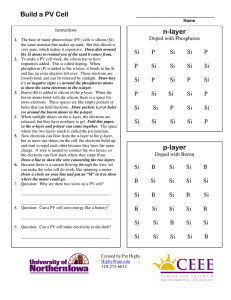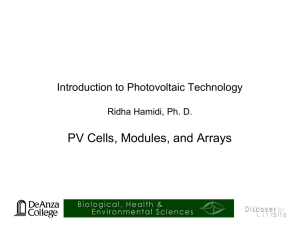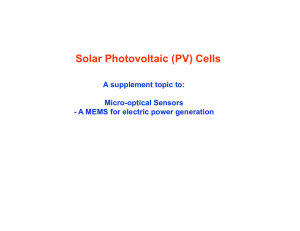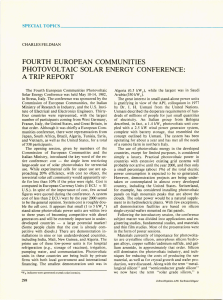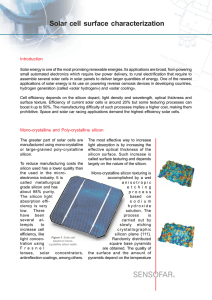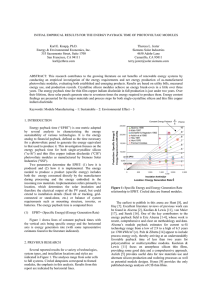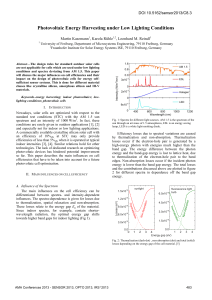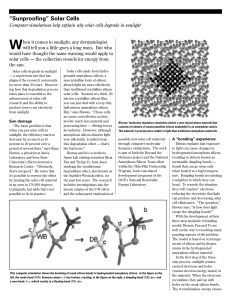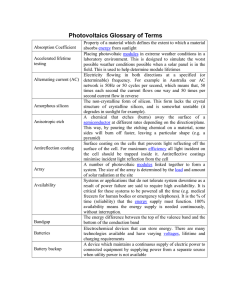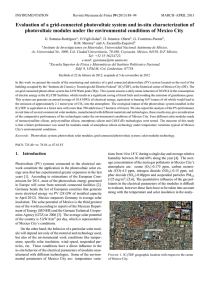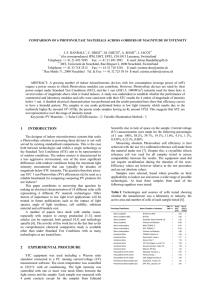Solar Photovoltaic S stems Systems
advertisement
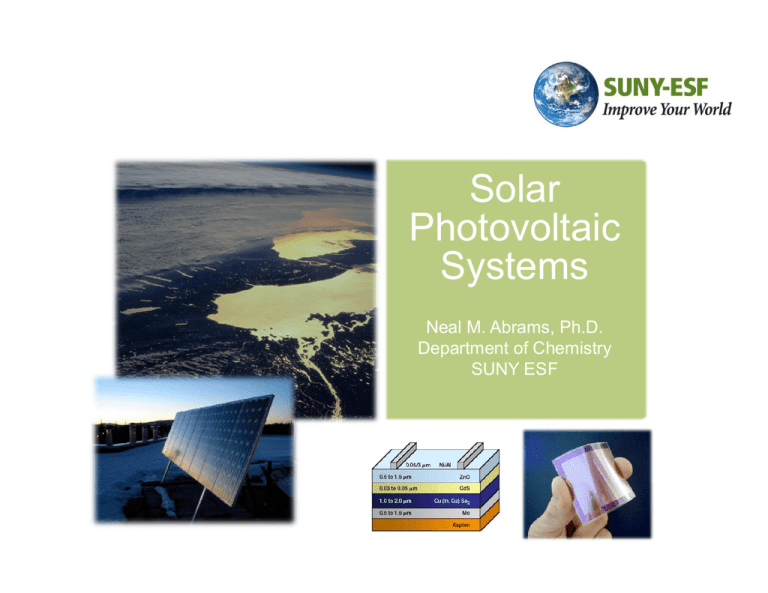
Solar Photovoltaic S stems Systems Neal M. Abrams,, Ph.D. Department of Chemistry SUNY ESF A Focus on Energy Use 1.8x1012 Watts ((continuously) y) 6x109 persons 3 100W light bulbs per person U.S. – 25% of total 15 100W light bulbs per person 36 kWhr/day/person Solar energy 1% Conventional hydroelectric power 45% Geothermal 5% Wind energy 2% Biomass 47% U.S. U S Energy E Consumption Where are the people? Where is the power? p Where are the watts? How much do we need? Area required for all US electricity production (~100 x 100 miles) Is PV the complete solution? Advantages Disadvantages Vast, renewable, free fuel Diffuse fuel source No emissions emissions, no combustion, combustion High g installation costs offset by financial incentives source no radiation Low operating costs No Moving parts High g reliability y Modular Point of use capability Poor reliability of system components (inverters, etc.) Lack of efficient energy storage The Magic g in the Panel Photons in sunlight hit the solar panel and are absorbed creating a dc source (a battery) Cover glass e- An array of solar panels converts solar energy into usable DC electricity. Inverters convert the DC to grid. 60 Hz AC to feed the g anti-reflective coating front contact n-layer p-layer back contact Photovoltaic types yp and benefits Silicon Single crystal silicon (c-Si) Multicrystalline silicon (mc-Si) Amorphous silicon (a-Si) Thin-film Thin film Silicon Cadmium telluride, CdTe Copper indium gallium diselenide , CIGS Very efficient in diffuse light conditions Dye-sensitized Efficiency: y How high? g Maximum measured efficiencies under lab conditions as of 2008 % Efficien ncy 30 20 10 0 Cell type Anatomyy of PV cell Cover glass e- anti-reflective anti reflective coating front contact n-layer p layer p-layer back contact Anatomyy of a PV Installation PV Production Payback y Current silicon PV technology requires 4 years to generate the energy required to produce it. Third-generation PV cells require only 2 years. Alternatives Other semiconductors: GaAs, GaInP, CdTe, CIGS Thin films and amorphous cells Solar concentrators Dye-sensitized Costs todayy and benefits tomorrow The value of a cost in the future is not equal q to the same cost today. y Cost Would you rather get $100 now or over 5 years? Would yyou save it or spend p it? Which is more prudent? Number of Modules N 250,000 200,000 150,000 Production Imports 29 Exports 27 Number of Companies 25 23 3 21 100,000 19 50,000 0 1998 17 15 2000 2002 2004 Year Handbook of Photovoltaic Science and Engineering, 2006 2006 2008 Number of C Companies PV Cash Flows $60 000 $60,000 $40,000 Co ost $20,000 $0 -$20,000 -$40,000 1 6 11 16 21 Years in Service 26 Salvage Repair p Maintenance Electricity -$60,000 -$80,000 Purchase Cushioning the blow Federal Financial Incentives Residential Federal tax credits are available at 30% of the cost, with no upper limit http://www.energystar.gov/index.cfm?c=tax_credits.tx_index#s1 Commercial A tax deduction of up to $1.80 per square foot available on new or existing commercial buildings that save at least 50% of the heating and cooling energy of a building that meets ASHRAE Standard 90.1-2001. Partial deductions of up to $.60 per square foot can be taken for measures affecting any one of three building systems: the building envelope, lighting, or heating and cooling systems. http://www.energystar.gov/index.cfm?c=tax p gy g _credits.tx_comm_buildings g Cushioning the Blow State incentives 40-45% deduction of installed cost installer eligibility required Residential Low-interest financing –or – 10% deduction ($3 ($3,000 000 maximum) Additional incentives for income-qualified homeowners Commercial Several development incentives Other issues People, places, and politics Building infrastructure Permits: Electrical and structural Neighborhood g restrictions Beauty and the bulb Finding installers Maintaining incentive programs Is it worth it??? nyserda.cleanpowerestimator.com/nyserda.htm Net Cash Flow PV development p Questions? Q
